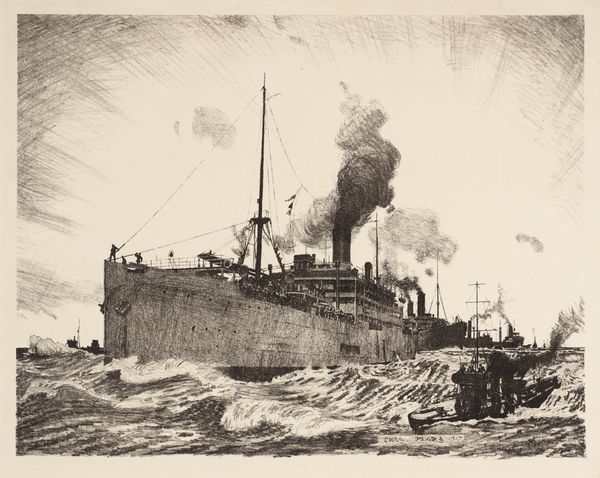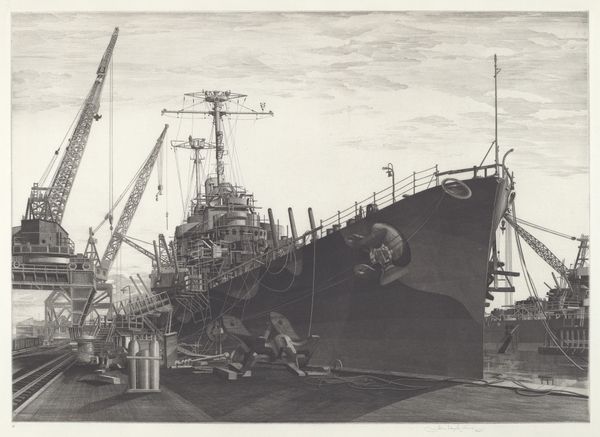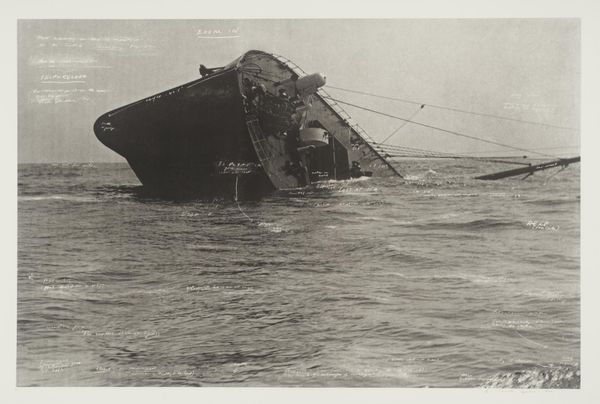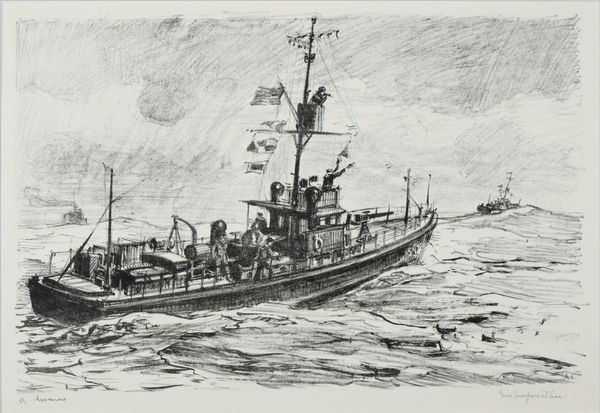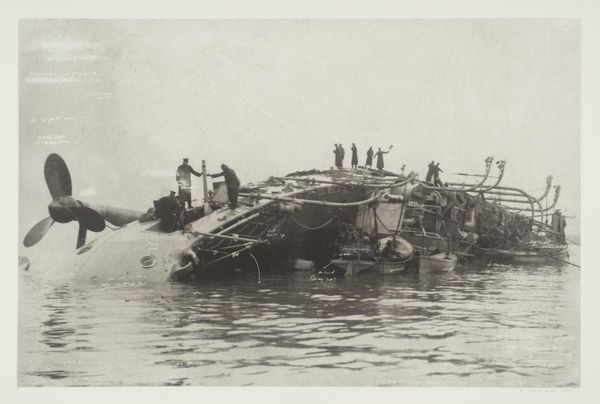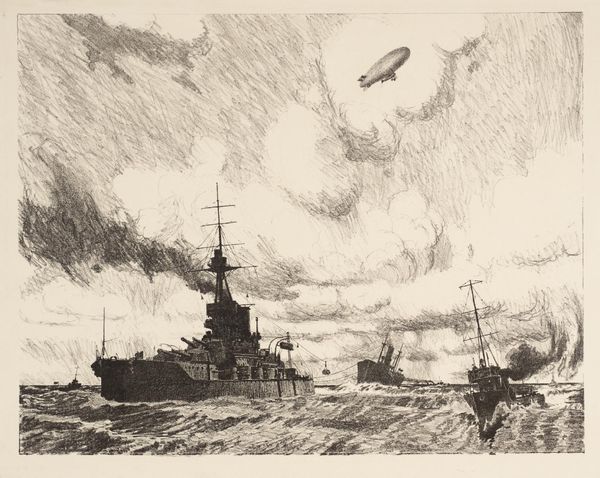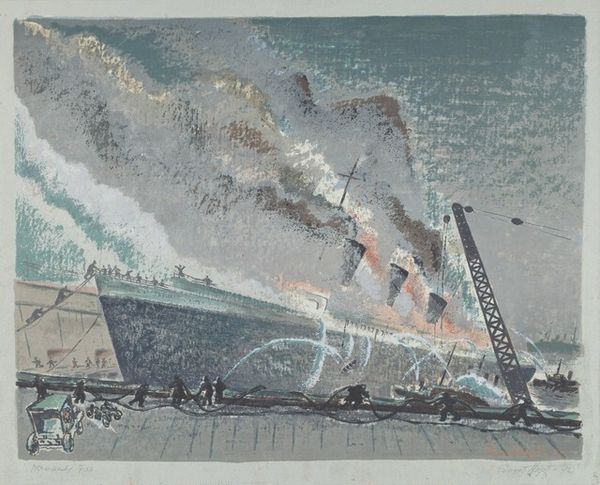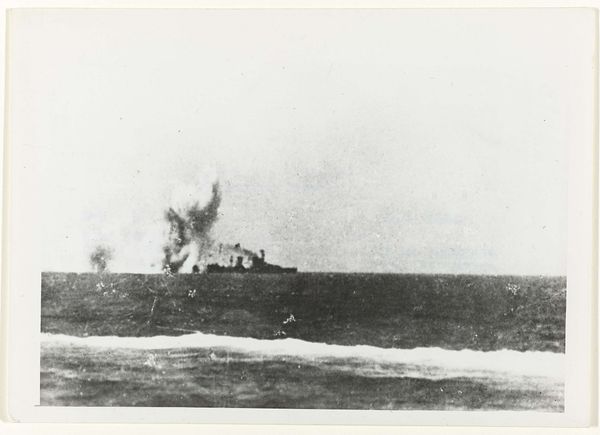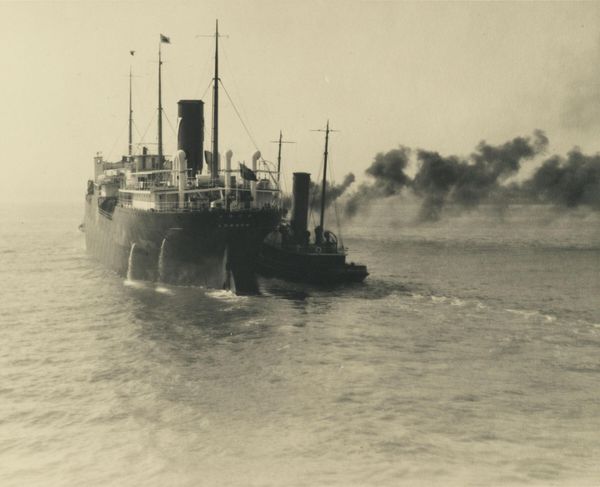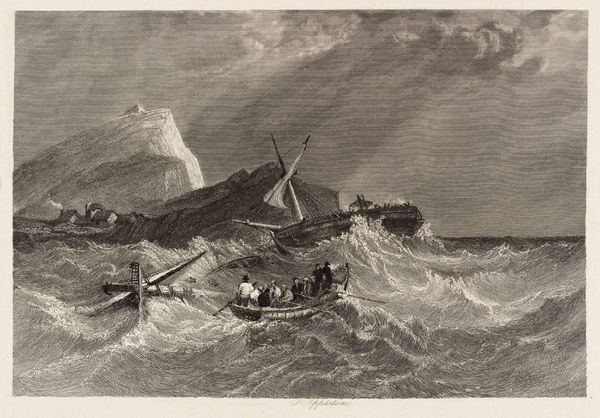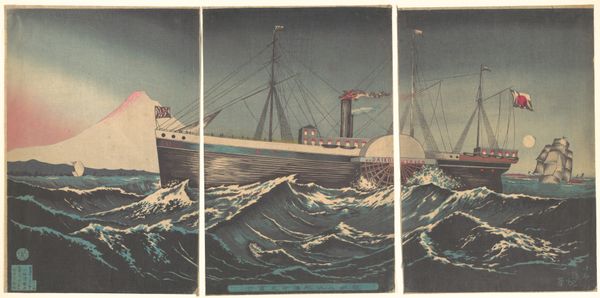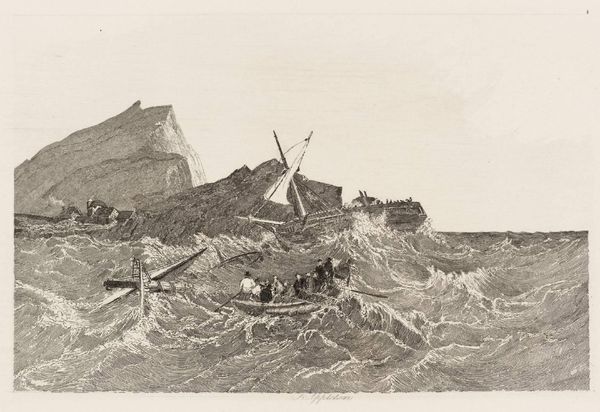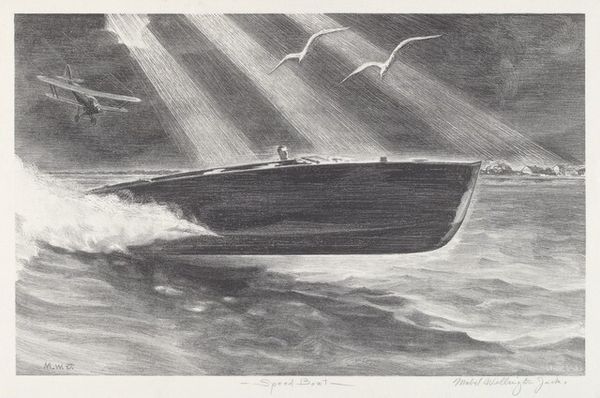
Dimensions: image: 450 x 685 mm support: 540 x 690 mm
Copyright: © Tacita Dean, courtesy Frith Street Gallery, London and Marian Goodman Gallery, New York/Paris | CC-BY-NC-ND 4.0 DEED, Photo: Tate
Curator: Tacita Dean's "The Wrecking of the Ngahere," part of the Tate Collections, is an image awash in visual and textual layers. Editor: It feels… ominous. Like a ghostly ship struggling against the sea, half-swallowed by the waves. Curator: Dean’s work often engages with ideas of time, memory, and the history of the photographic medium itself. This image is no exception. Editor: The handwritten annotations really complicate things, don’t they? It is almost like a mariner's log, yet poetically fragmented and open-ended. Curator: These annotations function as a form of historical mapping, layering observations and interpretations onto the visual record of the wreck. Dean often explores how archival images acquire new meanings over time, through the lens of contemporary culture. Editor: It makes me think about how we try to make sense of disasters, both natural and man-made. We want to pin them down, label them, but the sea… it resists that kind of closure, doesn't it? Curator: Absolutely. Dean uses this scene to question the very act of witnessing, and the social narratives that emerge around events like shipwrecks. Editor: A reminder that even in wreckage, there's a weird kind of beauty. Something compelling about seeing the bones of a ship fighting the inevitable.
Comments
tate 6 months ago
⋮
http://www.tate.org.uk/art/artworks/dean-the-wrecking-of-the-ngahere-p20248
Join the conversation
Join millions of artists and users on Artera today and experience the ultimate creative platform.
tate 6 months ago
⋮
The Wrecking of the Ngahere belongs to a portfolio of twenty black and white photogravures with etching collectively entitled The Russian Ending. The portfolio was printed by Niels Borch Jensen, Copenhagen and published by Peter Blum Editions, New York in an edition of thirty-five; Tate’s copy is the fifth of ten artist’s proofs. Each image in the portfolio is derived from a postcard collected by the artist in her visits to European flea markets. Most of the images depict accidents and disasters, both man-made and natural. Superimposed on each image are white handwritten notes in the style of film directions with instructions for lighting, sound and camera movements, suggesting that the each picture is the working note for a film. The title of the series is taken from a convention in the early years of the Danish film industry when each film was produced in two versions, one with a happy ending for the American market, the other with a tragic ending for Russian audiences. Dean’s interventions encourage viewers to formulate narratives leading up to the tragic denouements in the prints, engaging and implicating the audience in the creative process.
